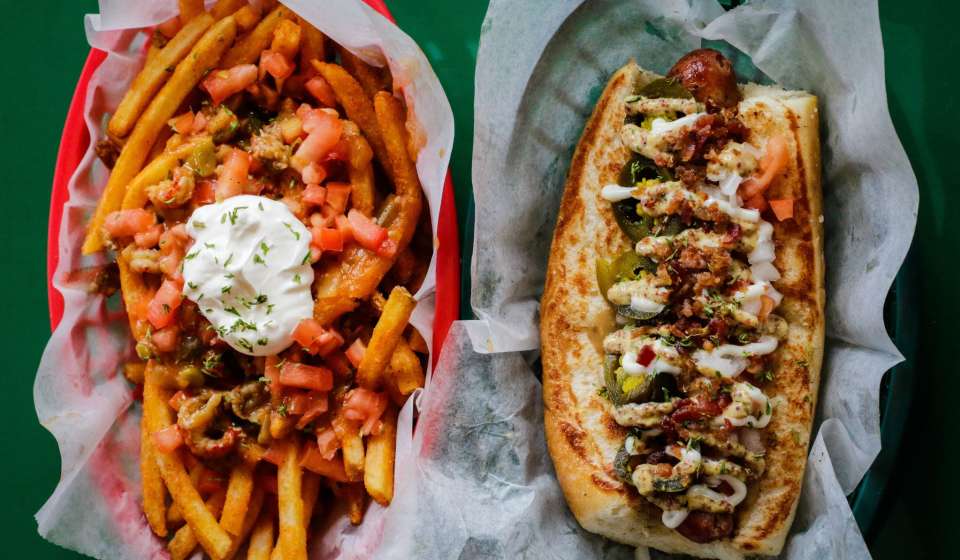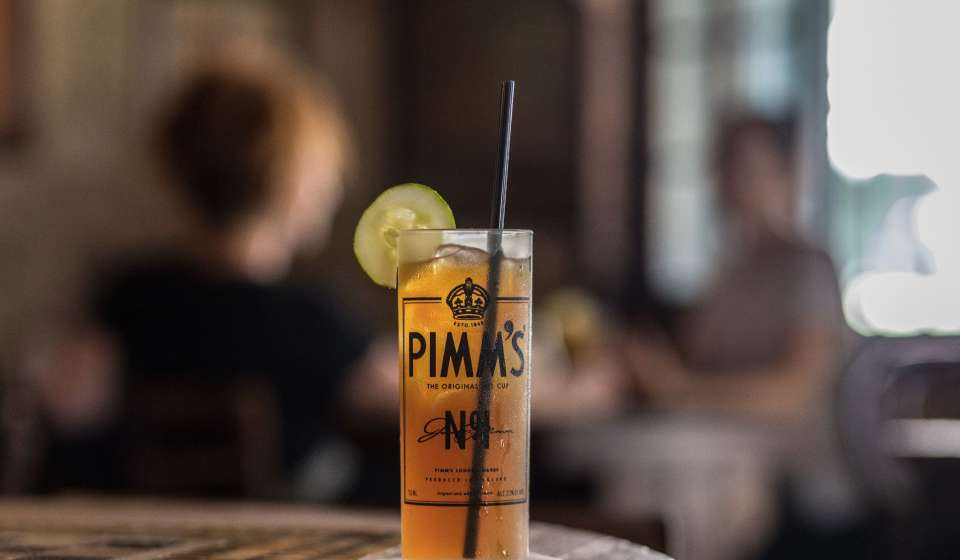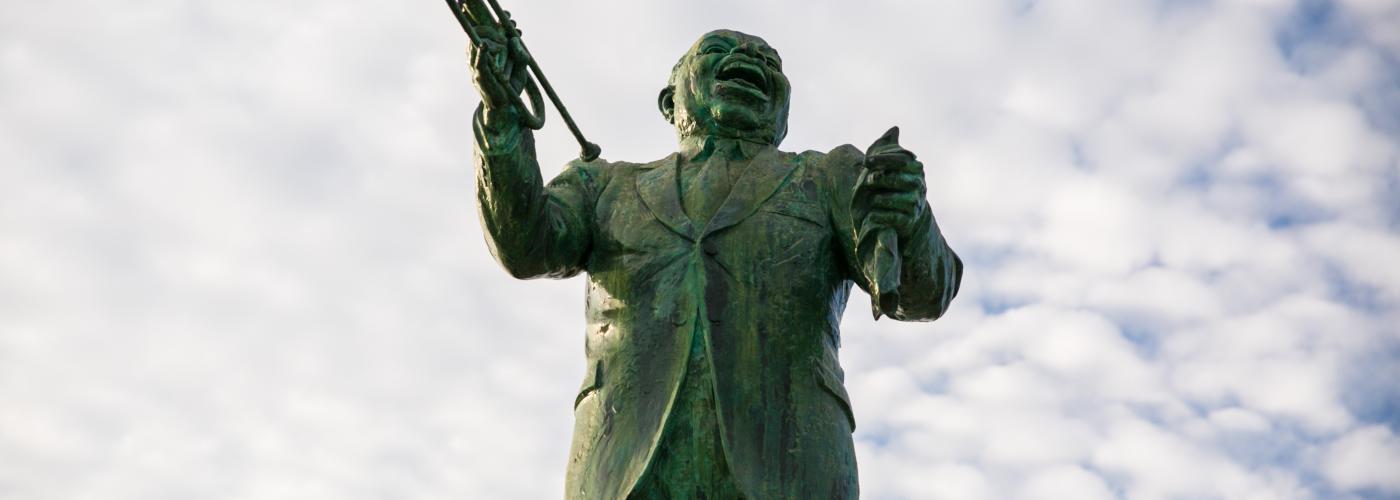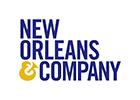FOR IMMEDIATE RELEASE
Media Contacts:
Mary Beth Romig
New Orleans Metropolitan Convention & Visitors Bureau
504-566-5050 / 504-606-8430 (cell)
mbromig@neworleanscvb.com
Erica Papillion
504-566-5044
epapillion@neworleanscvb.com
NEW ORLEANS METROPOLITAN CONVENTION AND VISITORS BUREAU ISSUES “STATE OF THE CITY” REPORT, MARCH 2007
Tourism industry already celebrates milestones in 2007 and projects strong year for business
NEW ORLEANS – March 6, 2007 – Three months into the new year, the New Orleans Metropolitan Convention & Visitors Bureau (NOMCVB) has many reasons to celebrate with daily progress in the resurgence of America’s most culturally important city, including a successful Mardi Gras, and a 24,000-person convention—the first major city-wide of 2007.
“The hospitality industry continues to be our number one industry and the heart and soul of the city. New Orleans hosted a healthy Mardi Gras 2007, with approximately 800,000 revelers, which was 10 percent larger than last year’s celebration,” said Stephen Perry, president and CEO of the NOMCVB. “The recent HIMSS annual convention brought some visitors to New Orleans that were skeptical about the city’s progress, but once here, they were pleasantly surprised to find New Orleans a spectacular host, more than capable of accommodating their gathering. ‘Seeing is believing’ and we encourage everyone to come to New Orleans and judge for yourself.”
2007 Milestones
Mardi Gras 2007 was a resounding success, with an estimated crowd of 800,000 and area hotels reporting a 95 percent occupancy rate throughout the last weekend of Mardi Gras. It was larger than the 2006 crowds of 700,000, but not as large as pre-Katrina numbers of 1 million. This year’s success insures the future of tourism in New Orleans and further illustrates the city’s ability to successfully and safely host large numbers of visitors.
The Healthcare Information Management Systems Society (HIMSS) successfully hosted their annual convention in New Orleans February 25-March 2, with 24,600 attendees, making it the largest group to meet in New Orleans so far this year. According to a front-page story in the Times-Picayune March 1, HIMSS conventioneers were pleasantly surprised and gave glowing reviews during their stay in the city, saying that their preconceptions about New Orleans and its ability to handle large numbers of visitors “inaccurate.” At a February 26 press conference at the NOMCVB, Stephen Lieber, president and CEO of HIMSS, stated, “We [HIMSS] have not heard a single complaint about not having enough cabdrivers or enough people in the hotels or the restaurants didn’t have enough help or anything like that. All of the things that we who live elsewhere have heard – and at times continue to hear about the city – we knew from the multiple trips we made here, that they simply weren’t true.”
In late February, the NOMCVB announced the appointment of Weber Shandwick, a global public relations firm, to bring visitors back and reinvigorate New Orleans’ most vital industry, tourism. Weber Shandwick’s Travel & Lifestyle Practice in New York will develop a 10-market media tour and series of events which brings the best of New Orleans culture to major metropolitan cities. Along with leisure visitors, the tour promotes the destination for conventions and meetings to meeting professionals, associations and corporate decision makers.
Cultural attractions abound this spring in New Orleans. Harrah’s Casino recently debuted a new musical, HATS; the National World War II Museum is hosting an Anne Frank exhibit; the New Orleans Museum of Art opened the exhibition, Femme, femme, femme, a collection of art featuring women in French society, featuring works from Renoir, Degas, Manet, Toulouse-Lautrec and Picasso; and the Vatican Mosaic Studio is being presented by the Catholic Cultural Heritage Center of the Archdiocese of New Orleans and is being hosted by the Old Ursuline Convent.
The Ritz-Carlton New Orleans’ Iberville Suites will re-open Friday, March 9, after an extensive renovation. The Iberville Suites will add 230 rooms to New Orleans’ hotel inventory.
Still known as America’s most unique cultural destination, New Orleans has received multiple honors. The Los Angeles Times (Feb. 4, 2007) named New Orleans one of the world’s “don’t miss destinations.” In December 2006, Orbitz described New Orleans as an “in” location for experience seeking vacationers. Travel + Leisure Magazine’s January 2007 issue included New Orleans in its “Where to Go Next” feature.
The New Orleans CVB launched an aggressive, strategic marketing, public relations and direct sales campaign, designed to celebrate its authentic culture, lure domestic and international visitors back, preserve the city’s leading industry (hospitality) and overcome misperceptions about New Orleans among consumers. “A Whole New Orleans,” a 30-minute travel television show, showcasing the eclectic nature and vibrant culture of the city, is in production and could be on the air on 50 countries by this spring.
“Forever New Orleans” is an international branding campaign that celebrates a spirit of swagger, showcasing the hospitality industry’s confidence in New Orleans as a destination. It uses headlines such as “New Orleans is Open. To Just About Anything.”, “Soul is Waterproof’” and “Old World, New Promise,” which are appearing on billboards and magazines throughout the US.
January 20-23, Meeting Professionals International brought 2,600 of the world's most influential meeting professionals to New Orleans for the second largest MPI Professional Education Conference-North America ever. It was a prime opportunity to showcase the city as a destination for future meetings being planned by MPI members. For testimonials, visit www.neworleansmeeting.com.
The Louis Armstrong New Orleans International Airport recently welcomed ExpressJet Airlines to New Orleans. ExpressJet will begin service in April and will offer non-stop service to Austin, San Antonio, Kansas City, Mo., Birmingham, Jacksonville, Fl., and Raleigh-Durham with 12 flights per day.
Convention business has returned to New Orleans, with the CVB with approximately 40 percent of pre-Katrina levels on the books; approximately 80 percent of pre-Katrina levels on the books and 100 percent or pre-Katrina levels for 2008.
Corporate America is discovering New Orleans as a meeting destination, bringing new, shorter-term meetings business to the city. Many corporations are drawn to New Orleans for the wealth of “voluntourism” opportunities available during meetings to expand strategic philanthropic and branding efforts. Recent corporate meetings held in the city include Whirlpool Corporation, Coca-Cola, Konica Minolta, Sherwin Williams and IBM.
Major meetings in 2007 include:
Event/Date/Projected Attendance
Healthcare Information & Management Society /Feb. 24 – Mar. 1 (city-wide)/24,000
American Association of School Administrators/Feb. 28 – Mar. 4/7,000
National Collegiate Athletic Association/Mar. 14 – 17 (city-wide)/20,000
American College of Healthcare Executives/Mar. 18 – 22/4,000
International Association for Dental Research/Mar. 20 – 25/6,000
American College of Cardiology/Mar. 23 – 27 (city-wide)/30,000
American Institute of Steel Construction/Apr. 17 – 21/2,000
Institute of Scrap Recycling/Apr. 17 – 22/3,300
Risk & Insurance Management Society/Apr. 29 – May 4 (city-wide)/30,000
American College of Sports Medicine/May 29-June 2/4,000
Merrill Lynch & Co., Inc./June 10-13/1,000
American Association of Law Libraries/July 14-19/2,800
National Council of State Housing Agencies/Sept. 15-18 (city-wide)/10,000
American College of Surgeons/Oct. 6-11 (city-wide)/16,000
International Association of Chiefs of Police/Oct. 13-17 (city-wide)/10,000
American Society for Clinical Pathology/Oct. 17-21/5,000
American Society of Agronomy/Nov. 4-8/4,800
American Academy of Ophthalmology/Nov. 9-13 (city-wide)/25,000
Pennwell Corporation/Dec. 11-14 (city-wide)/17,000
New Orleans will host major sports events in 2007 and beyond. The first and second rounds of the 69th Annual NCAA Division I Mens Basketball Championship Tournament will be played at the New Orleans Arena March 15-17, 2007; the Zurich Classic, a stop on the illustrious Professional Golfers Association tour, will be held at TPC Louisiana April 16-22, 2007. The Arena Bowl will be played at the New Orleans Arena in July 2007. In 2008, the Superdome will host the Allstate Sugar Bowl and the Allstate BCS National Championship Game in January and the New Orleans Arena will be the site of the 57th NBA All-Star Game in February.
The movie business has returned to New Orleans over the past year, with the city regaining its Hollywood South moniker. Over 30 movies released in 2006 were filmed in New Orleans and the surrounding areas, including: All the King’s Men, Bug, Failure to Launch, Glory Road, Last Holiday and Déjà Vu—the first movie to be filmed in New Orleans post-Katrina. Currently, The Curious Case of Benjamin Button, starring Brad Pitt and Cate Blanchett, is being filmed in the city. With a budget of $150 million, this is the most expensive film to ever shoot in New Orleans. There are currently over 20 movies that are filming or will be filming in New Orleans with a planned 2007 release. Film and television studios are expected to have an economic impact of more than $400 million this year. Because of tax incentives, Louisiana ranks third after New York and California as a location for filming.
Venue Updates
Under the management of SMG, the Louisiana Superdome reopened on Monday, September 25, 2006, with Monday Night Football, when the New Orleans Saints defeated the Atlanta Falcons before the largest audience in ESPN history. The game won the biggest share of the television audience among all TV networks, broadcast or cable, and featured pre-game concerts by the Goo Goo Dolls, U2 and Green Day, a coin toss by former U.S. President George H. W. Bush, and an estimated $20 million pumped into the city’s economy. Further, the New Orleans Saints enjoyed a sold-out season for the first time in the franchise’s 40-year history, with a waiting list for future years. The New Orleans Saints finished the 2006 season with a record of 11-7, reaching the NFC Championship Game against the Chicago Bears and one game away from a Super Bowl XLI appearance.
The neighboring New Orleans Arena reopened in March 2006. SMG currently has 150 full-time employees, with a part-time work force of approximately 2,500, including detail police officers.
With $60 million in renovations completed, the Morial Convention Center is sporting a brand new look and level of comfort. Renovations include new flooring and furnishings on all three levels, hotel-like finishes, and a brighter, more engaging environment. The same great service and amenities that made the Morial an industry leader are better than ever-high speed wi-fi, 4,000-seat Conference Auditorium, 12 separate/combinable exhibit halls, 140 meeting rooms and a team of seasoned industry professionals. The Center is doing brisk business in 2007---hosting more than 71 major conventions, tradeshows and meetings. The Center currently has 250 full-time employees.
Hospitality and Tourism
Hotels: New hotel developments abound in New Orleans, including the opening of the Hilton St. Charles Hotel (formerly Hotel Monaco) next month. All major hotels in New Orleans are open, with the Hyatt Hotel reopening in late 2007. The Fairmont Hotel’s opening date is still to be determined. Overall 208 metropolitan area accommodations are open, with 31,000 of 38,000 hotel rooms available. The vast majority of downtown hotel properties are reopened, many completing renovations and upgrades in the last quarter of 2005. The newly-constructed Harrah’s Hotel opened in September 2006, and the Ritz-Carlton and Chateau Sonesta reopened in December 2006 after extensive renovations.
Dining: According to the Louisiana Restaurant Association, there are 743 restaurants open in Orleans Parish alone--90 percent of pre-Katrina totals. These include the restaurants in the French Quarter, downtown, Warehouse Arts District, Garden District and Uptown New Orleans popular with visitors to the city. As well, 18 major new restaurants opened in the metro area and are enjoying success. (This figure does not include fast-food restaurants, most national chains, bars serving food and coffeehouses.) There are now 1,562 restaurants open in the Greater New Orleans metropolitan area, employing 39,800 people. In 2006, restaurants generated $4.8 billion in direct sales.
Air Transportation: Louis Armstrong International Airport, as of February 2007, reports 110 flights serving 32 cities (68 percent the number of daily departures and 77 percent the number of destinations; 13,465 seats or 65 percent of our Pre-Katrina level of seats per day). The NOMCVB is working with the airlines and airport officials with regard to convention scheduling to ensure adequate lift to meet demand.
Airlines operating out of the Louis Armstrong International Airport include: Air Tran, American Airlines, Continental, Delta Airlines, Jet Blue, Northwest, Southwest Airlines, United Airlines, U.S. Airways and ExpressJet. Delta Airlines recently added non-stop flights to Los Angeles to the delight of tourists and business travelers alike.
On Wednesday, December 6, 2006, The Louis Armstrong New Orleans International Airport launched an unprecedented maintenance campaign to clean and improve the environment at the region's premier international airport for guests arriving and departing the New Orleans region.
Dubbed "Music to Your Eyes", the campaign is designed to transform the environment of the Airport into an even fresher and more visitor-friendly facility.
Cruise Industry: The Delphin Renaissance, a 600-passenger luxury ship, was the first cruise ship to call on the Port of New Orleans in the post-Katrina era when it docked December 31, 2005 at the Thalia Street Wharf alongside the Port's Administration Building. The Norwegian Cruise Lines, Carnival Cruise Lines and Royal Caribbean International have returned. RiverBarge Excursion Lines will soon follow. The Queen Elizabeth 2 called upon the city of New Orleans for the first time in its 40-year history on Monday, November 27, 2006.
Major Attractions: All the major attractions in the city, including the Harrah’s Casino, the Audubon Zoo, Aquarium and IMAX theater, Mardi Gras World, Café Du Monde, paddlewheel cruises on the Mississippi River, carriage rides through the French Quarter and CBD, ferry rides across the Mississippi River, the Steamboat Natchez and the Creole Queen, plantation, swamp and specialty tours, nightclubs and music venues are open.
Cultural Institutions: All major museums have reopened including the New Orleans Museum of Art and Besthoff Sculpture Garden, The Ogden Museum of Southern Art, the National World War II Museum, the Contemporary Arts Center and the Louisiana Children’s Museum. The New Orleans Ballet, the Louisiana Philharmonic Orchestra, and community theatres throughout the metropolitan New Orleans area are back in operation.
Urban shopping destinations: The Shops at Canal Place, The Riverwalk and Jax Brewery are open, offering visitors a full complement of national stores, specialty shops and boutiques. Saks Fifth Avenue, the anchor store in The Shops at Canal Place, is now open and boutiques, art galleries and antique stores are open throughout the city. Tax-free shopping is available for international visitors in Orleans and neighboring Jefferson Parish.
Voluntourism: Since Hurricane Katrina and its aftermath, the metropolitan New Orleans community has been the beneficiary of an incredible outpouring of support from visitors to New Orleans. From convention visitors to leisure travelers, church groups to high school and college students, people have shown incredible generosity in giving of their time and talent, and a great deal of elbow grease, helping the city of New Orleans in its recovery and restoration. The Governor of Louisiana, Kathleen Blanco, has established through her office a Web site matching those interested in volunteering with organizations seeking assistance in New Orleans and throughout South Louisiana. As well, the CVB has on its Web site a listing of organizations seeking volunteer assistance.
2006 Conventions: Last year saw a strong return of meetings and conventions to New Orleans. In June 2006, New Orleans celebrated the return of city-wide meetings to the city, with the American Library Association’s convention bringing 17,000 attendees. The National Association of Realtors’ annual meeting in November 2006 brought to New Orleans approximately 24,000 visitors. Registration for that meeting marked a 17 percent increase in attendance since their last gathering in New Orleans in 2002, with a record number of exhibitors participating.
A full convention calendar for October 2006 and November 2006 included the American College of Emergency Physicians, the American Society of Exploration Geophysicists, American Society of Human Genetics, American Society for Reproductive Medicine, Federation of Societies for Coatings Technology and Avaya, a Fortune 500 company.
In addition to the large association meetings previously planned, advisory boards of major association and hotel corporations chose to host their meetings in New Orleans last year, reconfirming the allure of New Orleans as a top destination.
About the City
Neighborhoods: The core of the New Orleans hospitality and tourism destinations are open and thriving, including the Faubourg Marigny, French Quarter, Warehouse Arts District, Garden District/Uptown, Audubon and University section, Carrollton and Riverbend, and historic Algiers on the city’s westbank, including hotels, restaurants and retail.
For the past several months, 13 neighborhood groups have come together under the auspices of the Unified New Orleans Plan, to propose an agenda to recreate and rebuild the neighborhoods of the city most affected by Katrina. The plan will incorporate public and private money to pay for homeowner incentives, major infrastructure repairs and economic development projects, all based on input from the individual neighborhood organizations. Plans also calls for the repair, renovation and rebuilding of schools and the development of a network of police substations.
“At the end of the day, we’re going to have a much a much better city post-Katrina, should this plan be implemented,” said Troy Henry, a coordinator of the citywide planning effort.
As well, neighboring Jefferson Parish to the west (home to Louis Armstrong International Airport and including Metairie, River Ridge, Harahan and Kenner) and the city’s “Northshore,” (a true bedroom community for downtown commuters, including the towns of Slidell, Mandeville, Madisonville, Covington, Abita Springs and Folsom located on the north side of Lake Pontchartrain) are bustling. These areas also include lodging, great dining opportunities, and major shopping destinations.
Population: According to the U.S. Census Bureau, the number of residents currently residing in New Orleans is 191,000. Over 1.1 million reside in the metropolitan New Orleans area.
Levee Repair and Restoration (information from the U.S. Corps of Engineers): The Corps of Engineers repaired and restored 220 miles of floodwalls and levees since September 2005. With a few exceptions, New Orleans now has Pre-Katrina flood and storm level protection, which was in place by the beginning of this hurricane season (June 1, 2006). This system is in equal or better condition than it was when Katrina hit.
The Corps' work to upgrade the flood and storm protection will continue through 2010. The Corps plans to engineer, construct and improve storm and flood protection infrastructure to a 100-year protection level within the Hurricane Protection System. This work includes stronger levees, floodwalls and storm-proofing of pumping stations.
2006 City Emergency Preparedness Plan: Mayor C. Ray Nagin's Office of Emergency Preparedness has developed a strategic plan for the management and evacuation of the citizens of New Orleans. No shelters of last resort will be made available. The Convention Center will be a staging point for evacuations. Amtrak trains will also be used for evacuation purposes.
CVB Emergency Preparedness: The Bureau, the City of New Orleans, and the state and city offices of emergency preparedness continue to monitor, evaluate and outline specific emergency strategies for immediate implementation to ensure the security of every visitor and local resident alike. The New Orleans Tourism Crisis Management Plan, along with diligent and thorough preparation with an emphasis on safety, will assist visitors and community members in responding appropriately to emergencies.
The City of New Orleans and State of Louisiana have for the first time implemented a unified emergency communications plan to ensure the timely flow of information across the region in emergency situations. A comprehensive and effective citywide emergency communications plan for the Greater New Orleans tourism industry has been developed.
Health and Safety: Wrapping up the agency's 11-month effort to pinpoint chemical contamination of soil and water following Hurricane Katrina, Environmental Protection Agency officials gave New Orleans and surrounding communities a final clean bill of health in a report issued August 18, 2006. (source: Times-Picayune, August 18, 2006) In the end, federal and state officials said the contamination they found was typical of many cities.
Food/seafood: Various federal, state and local agencies have conducted tests on the quality and safety of water and food, including the area’s seafood, and all have been pronounced safe to consume.
Air Quality: Official rating scales rate the air quality in the “good” zone. www.airnow.gov.
Security: The tourism industry is aggressively working in partnership with city officials on several immediate action steps to stop violent crime. Action steps being taken by the Mayor and the New Orleans Police Department to address crime are available at: www.cityofno.com/portal.aspx?portal=1&load=~/PortalModules/ViewPressRelease.ascx&itemid=3740.
We are encouraged by these actions and will not let crime reverse the city's successes of the past 30 years, in particular the past 12 months in hospitality and tourism.
New Orleans still remains—experience wise and statistically—a safe place to visit. What goes relatively unreported is that New Orleans successfully and safely has welcomed tens of thousands of visitors since June 2006, including Mardi Gras; the New Orleans Jazz & Heritage Festival; business meetings ranging from 10 people to 24,000; and major sporting events such as the Allstate Sugar Bowl.
The most visible action visitors likely will notice are increased patrols from the New Orleans Police Department and Quality of Life officers, enhancing the already safe record of popular tourist areas.
We remain committed to ensuring that America's most authentic city is a great place to live, work and visit.
New Orleans Police Department: Ratio of police to citizens is higher today.
Post-Katrina: 1,421 officers Ratio of officers to residents: 1:134
Pre-Katrina: 1,680 officers 1:291 (pop. of over 400,000)
Hospitals: Twelve hospitals are currently open in the metropolitan New Orleans area, including Tulane Hospital and Clinic, Touro Infirmary and Children’s Hospital in Orleans Parish, East Jefferson Medical Center and Clinic, Tulane-Lakeside Hospital, Ochsner Clinic Foundation and Hospital, Kenner Regional Medical Center and Omega Hospital in East Jefferson Parish, and West Jefferson Medical Center on the westbank of the Mississippi River. Memorial Baptist Hospital has opened a small portion of its uptown campus, with more improvements being made. University Hospital, located in downtown New Orleans, has recently opened a trauma center and it is being operated by Louisiana State University. It is the first trauma center to open in New Orleans since Hurricane Katrina. For the past year and a half, LSU was operating a trauma unit in a New Orleans suburb. The new trauma center will have 26 surgery beds and 10 intensive care beds.
Business: According to statistics from the Louisiana Department of Economic Development, as reported in the Times-Picayune on April 16, 2006, 62,300 businesses have reopened since Hurricane Katrina, of the 81,000 local businesses in the 10 parish metropolitan area. According to the LDED, 17, 716 of Orleans Parish’s businesses have reopened, translating to almost 90% of pre-Katrina numbers.
New Orleans Lakefront Airport is open 24 hours a day. Full service fuel, line service, flight training and aircraft rescue crews are available.
Taxis: Taxis are available on New Orleans streets and at major hotels, with the taxicab bureau reporting approximately 1,200 of their cabs back on the streets. Taxi rates are $2.50 plus $1.60 per mile (.20 per one-eighth mile) thereafter. There is also an additional charge of $1.00 per passenger after the first passenger. During peak visitor times (including Mardi Gras and Jazz Fest) taxi rates are $4 per person or the meter rate, whichever is higher. A fixed rate of $28 (one to two people) is charged from the airport to most areas of New Orleans. For parties of more than two, the fare is $12 per person.
Regional Transit Authority: RTA services are $1.25, including bus transportation and the streetcar. The New Orleans Streetcar line is partially back in service, including the leg traveling on Canal Street from the Mississippi River to Mid-City, and from Canal Street north on Carrolton Avenue to City Park at Wisner Boulevard. The Riverfront line is also running. While a small leg from Canal Street to Lee Circle in the city’s Central Business District has reopened, the time line for the full return of the historic St. Charles Avenue line is well into 2007. The electrical substations were originally constructed in the 1940s and were in need of upgrading.
Airport Shuttle, Inc., is the official ground transportation for Louis Armstrong International Airport, with service to and from New Orleans’ hotels and other designated locations. Fare is $13.00 each way. No reservations are required.
Twenty-nine bus lines are running, providing 25,000 rides daily. Bus service allows transportation throughout the city’s major corridor, extending from the Faubourg Marigny to Riverbend.
Amtrak is operating in New Orleans. The City of New Orleans is running again to Memphis and Chicago, while the Crescent has resumed its regular route to Atlanta and New York.
Port of New Orleans: The Port is open to cargo traffic. Operating today at 100 percent of its total capacity, all of the ports’ stevedores and terminal operators are open during normal business hours.
Education: The Greater New Orleans area has approximately 200 parochial schools, including Catholic and private schools (pre-K through 12th grade). There are 56 Orleans Parish charter and traditional public schools open. The Louisiana Recovery Schools District provides education for 28,000 students.
Local colleges and universities are open, including Tulane University, Loyola University, the University of New Orleans, Our Lady of Holy Cross College, Xavier University, Dillard University, Southern University of New Orleans, Delgado Community College, Nunez Community College and Louisiana Technical College.
Current and Future Economic Opportunities and Projects
Proposed Riverfront Development: The cooperative endeavor agreement between the city and the Port of New Orleans symbolizes the return of a four-mile stretch of Mississippi riverfront to citizens. It includes visions of riverside green space and the construction of RiverSphere — a museum and river research center — and a riverfront performing arts venue.
Nine teams of architects and planners from New Orleans and cities around the world responded to a recent invitation to help plan the redevelopment of a 4.1-mile stretch of publicly owned land along the east bank riverfront.
The board of the New Orleans Building Corp., including Mayor Ray Nagin and two City Council members, on December 21, 2006 ratified a selection committee’s recommendation that a contract be awarded to the team led by Chan Krieger Sieniewicz, a Cambridge, Mass., planning and urban design firm; Hargreaves Associates, a San Francisco and Cambridge landscape architecture firm; TEN Arquitectos, a New York and Mexico City architecture firm; and Eskew + Dumez + Ripple, a New Orleans architecture and urban design firm. Their plans will be revealed in June 2007.
Lake Forest Plaza Redevelopment: Lake Forest Plaza, an eastern New Orleans shopping mall that has been empty since Hurricane Katrina, will be demolished to make way for a new Lowe's Home Improvement store plus another million square feet of adjoining retail space. The $147 million redevelopment plans call for Lowe's to anchor an open-air, pedestrian-friendly shopping area including a 225,000-square-foot discount retailer and a 100,000-square-foot department store. The Lowe’s store will be finished by the end of 2007 and will employ 175 permanent employees.
Other Economic Development Projects include:
LIFT Productions Digital Media Studio/Soundstage Training Complex: The Film Factory is a 300,000 square foot world class motion picture production studio that includes four state-of-the-art sound stages, a film training institute, and distribution house under one roof. The Film Factory will be owned and operated by LIFT Productions, a Louisiana-based company that has produced and financed more than 30 motion pictures and television movies since it opened its doors in 2002. The Film Factory will be located on 18 acres of land just west of the French Quarter, and will be the first facility in the United States to house a state-of-the-art training institute on an active motion picture studio lot. The $185 million project was initiated in August of 2004 and is expected to be completed in the fall of 2008.
Trump Tower Condominium Development: Set to be completed in 2009, once constructed, the Trump Tower will become the tallest building in the city of New Orleans and the state of Louisiana, at sixty-seven stories. At a height of over 750 feet, it will also be the tallest building along the Gulf Coast outside of Houston. It will be a multi-use building with the ground floors allocated for retail shopping, the lower floors will be luxury condo-hotels and the upper floors will be luxury condominiums. The development will have an economic impact of $100 million.
About New Orleans Metropolitan Convention & Visitors Bureau (NOMCVB) (www.neworleanscvb.com) is the driving force behind New Orleans' most important industry, tourism, which generates $5 billion in visitor spending and creates 85,000 jobs. Today the cultural riches, sensual indulgences and unparalleled service that define the New Orleans experience continue to flourish, as they have for centuries. The most celebrated and historic core of the city - including the French Quarter, Central Business District, Warehouse and Arts District, Magazine Street and Garden District - not only remains intact, both physically and spiritually, but is thriving. The New Orleans CVB is proudly welcoming visitors and business travelers every day.
# # #











